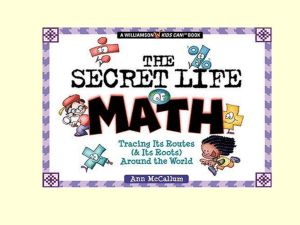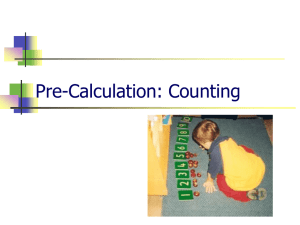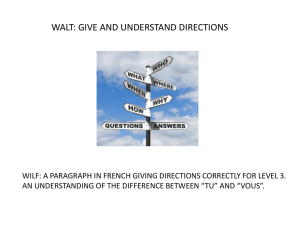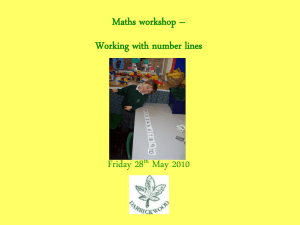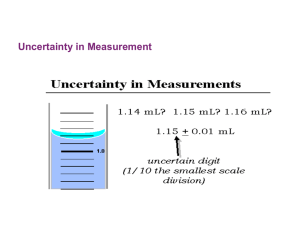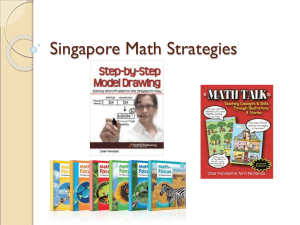Object Counting - Grab a Handful
advertisement
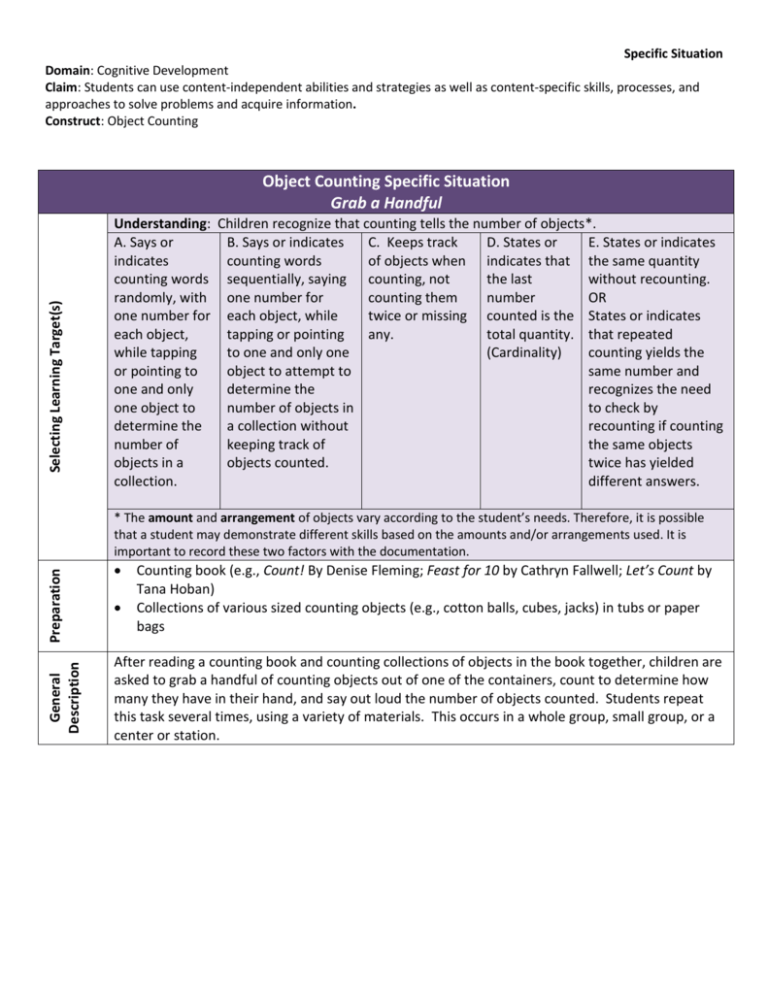
Specific Situation Domain: Cognitive Development Claim: Students can use content-independent abilities and strategies as well as content-specific skills, processes, and approaches to solve problems and acquire information. Construct: Object Counting Selecting Learning Target(s) Object Counting Specific Situation Grab a Handful Understanding: Children recognize that counting tells the number of objects*. A. Says or B. Says or indicates C. Keeps track D. States or E. States or indicates indicates counting words of objects when indicates that the same quantity counting words sequentially, saying counting, not the last without recounting. randomly, with one number for counting them number OR one number for each object, while twice or missing counted is the States or indicates each object, tapping or pointing any. total quantity. that repeated while tapping to one and only one (Cardinality) counting yields the or pointing to object to attempt to same number and one and only determine the recognizes the need one object to number of objects in to check by determine the a collection without recounting if counting number of keeping track of the same objects objects in a objects counted. twice has yielded collection. different answers. General Description Preparation * The amount and arrangement of objects vary according to the student’s needs. Therefore, it is possible that a student may demonstrate different skills based on the amounts and/or arrangements used. It is important to record these two factors with the documentation. Counting book (e.g., Count! By Denise Fleming; Feast for 10 by Cathryn Fallwell; Let’s Count by Tana Hoban) Collections of various sized counting objects (e.g., cotton balls, cubes, jacks) in tubs or paper bags After reading a counting book and counting collections of objects in the book together, children are asked to grab a handful of counting objects out of one of the containers, count to determine how many they have in their hand, and say out loud the number of objects counted. Students repeat this task several times, using a variety of materials. This occurs in a whole group, small group, or a center or station. Specific Situation Domain: Cognitive Development Claim: Students can use content-independent abilities and strategies as well as content-specific skills, processes, and approaches to solve problems and acquire information. Construct: Object Counting The teacher reads aloud a counting book, inviting the children to point and count together different groups of objects in the book. Then, the teacher introduces various collections of objects for the students to count. The students are asked to use one hand to reach into the container, grab a handful of objects, count the number of objects grabbed, and say out loud the number of objects counted. Eliciting Evidence of Learning The teacher observes the students counting the different objects, and increases or decreases the difficulty by asking students to count specific collections. Thus, a child who is unable to count a large quantity of smaller-sized objects accurately is asked to count the collections of larger-sized objects, therefore decreasing the quantity of objects likely to fit in a handful. If a child accurately counts a few objects, then the teacher asks the child to count the collections of smaller-sized objects, thus increasing the quantity likely to be grabbed in a handful. The teacher also uses probes, asking open-ended questions in an attempt to uncover what the children know and are able to do. Vignette During Math Stations, Jonah and Samira are counting objects. Jonah reaches in and grabs a handful of cubes. He counts them, touching each one as he says the numbers in the correct sequence, “One, two, three, four, five, six, seven, eight, nine, ten, eleven”; however, he counts several cubes twice. He then turns to Samira and says “Eleven! I grabbed eleven.” As the teacher observes, she notices that Jonah does not consistently keep track of objects when the collection has eight or more. She asks Jonah to count objects from the two containers that contain larger objects. As the teacher observes, she notices that Jonah is able to accurately count collections of six or fewer objects while counting in the correct sequence, keeping track of the objects, and knowing that the last number stated represents the quantity counted. She also notices that Samira quickly and accurately counts collections of ten or more objects. As Samira counts a collection of objects and reports, “Eleven”, the teacher probes. “Samira, I heard you say that you counted eleven objects. What would happen if you counted them again? How many would you have?” Samira responds without hesitation, “Eleven.” The teacher probes further, “Are you sure?” Samira turns and counts the objects quickly and accurately. “Eleven. See. I knew there would be eleven.” The teacher probes, “How did you know that there would be eleven?” Samira responds, “Because that’s how many there are.” Suggested Probes: “How many (name of object) do you have?” “If you counted them again, how many would you have?” “Are you sure?” “How do you know?” Probes to Avoid: “If you counted them again, you would have the same amount; right?” “That’s right. It will be the same because we didn’t add any or take any away, did we?” Adapting/ Responding to Learning Needs Interpreting the Evidence Specific Situation Domain: Cognitive Development Claim: Students can use content-independent abilities and strategies as well as content-specific skills, processes, and approaches to solve problems and acquire information. Construct: Object Counting Observation: After the teacher changed the type of objects Jonah counted, Jonah accurately counted collections of six or fewer objects while counting in the correct sequence, keeping track of the objects, and knowing that the last number stated represents the quantity counted. Identify Learning Status on Construct Progression: D. States or indicates that the last number counted is the total quantity. (The teacher made a note that Jonah was successful consistently for collections of six or fewer objects.) Observation: Samira consistently counted collections of ten or more objects. When probed further, Samira indicated without hesitation that the quantity of a particular collection of 11 objects she has counted will remain 11, even if recounted. Identify Learning Status on Construct Progression: E. States or indicates the same quantity without recounting OR States or indicates that repeated counting yields the same number, and recognizes the need to check by recounting if counting the same objects twice has yielded different answers. (The teacher made a note that Samira was successful consistently for collections of eleven or fewer objects.) NOTE: Since the observation ended at this point in time, the teacher makes a note to probe further next time to determine what Samira would think if the objects counted were rearranged and then recounted. Once the evidence is interpreted the learning status is identified on the construct progression, continue to adapt and respond to the learning needs of the student addressing the same learning target if the student hasn't met it. If the student has met the learning target, work with the student to select a new learning target for teaching and learning.

